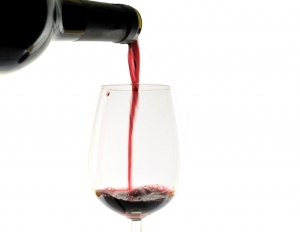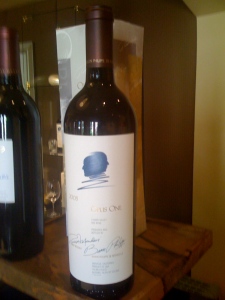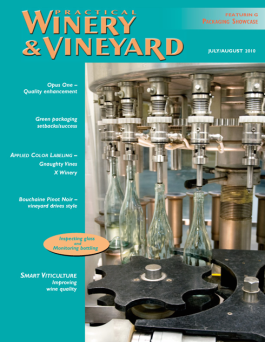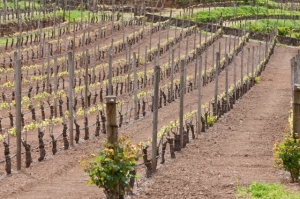 A geographical indication (GI) is the name of a place or region within a country that serves a primary identifying function for a product originating from that location. A primary example of a GI is the term Bordeaux, which refers to red wine from the Bordeaux region of France. A GI may be present when the name of the location drives consumer recognition of the quality, reputation, or other characteristic of the product. Typically these regions keep strict standards and police how products baring the name are produced and manufactured. The same name used on products without these same standards can dilute its significance or value in the marketplace.
A geographical indication (GI) is the name of a place or region within a country that serves a primary identifying function for a product originating from that location. A primary example of a GI is the term Bordeaux, which refers to red wine from the Bordeaux region of France. A GI may be present when the name of the location drives consumer recognition of the quality, reputation, or other characteristic of the product. Typically these regions keep strict standards and police how products baring the name are produced and manufactured. The same name used on products without these same standards can dilute its significance or value in the marketplace.
The United States currently protects GI’s under the construct of the system for registering trademarks. The system allows nationals and foreigners alike to apply to protect terms through the United States Patent and Trademark Office (USPTO). Examples of domestic GI’s that are protected are terms such as Florida Oranges or Napa Valley Wines, while foreign marks such as Cognac and Darjeeling are equally protected. There is no individual GI registry in the U.S., so one would search for a GI through the registry for trademarks. Also, a GI can be registered as a certification mark, where the owner of the mark allows third parties to use the term if they meet the standards or qualifications for the product. Some GI’s are also protected outside of the intellectual property regime and under the common law (case law).
France has implemented a strong domestic GI system, known as the appellation d’origine contrôlée, which has been existence since the early 20th century that protects over 500 wine and spirits GI’s. A system in which geographical indications and registration of appellations are congruent is practical and more easily understood, while the US system tends to confuse some because of the division between GI’s as trademarks and appellations as American Viticulture Areas (AVA).
The World Trade Organization (WTO) has held wines and spirits as a special class of GI’s due to the uniqueness of a wine depending on the climate, soil, and other geographical considerations of a particular region. Due to this the WTO believes wine and spirits garner increased protection, from which a special system for the registry and notification of wine and spirits GI’s has been in development.
A system for the multilateral notification and registry of geographical indications for wines and spirits has been in the works since 1997, when Article 23.4 of the TRIPS Agreement (Trade-Related Aspects of Intellectual Property Rights) was agreed to by WTO member states. The purpose of the system would be to facilitate the protection of GI’s on an international scale. In 2001 the Doha Declaration once again affirmed this mandate. In the years since, there has been a tug-of-war on how to implement the system between two factions, one lead by the European Community (EC), India, China, and others (the Draft Modalities proposal) and another by the U.S., Chile, Argentina, New Zealand, and Australia, among others (the Joint Proposal). Another proposal by Hong Kong seeks a middle ground between the two. The key distinction is to what extent notification and registry of a geographical indication will bind members that agree to be part of the system to act, and also how the registry will affect third parties that do not wish to be a part of the system or stand to gain no benefit from the system (essentially those that do not have a wine and/or spirits industry). Other contentious issues involve the costs of such a system, special treatment for developing or least-developed countries, and whether member states should have the ability to make reservations or exceptions to the agreement.
The Draft Modalities is more rigid and includes more obligations than the Joint Proposal, which is unsurprising because Europe has the most to gain from an international GI system. Terms synonymous with the concept of GI’s such as Port, Champagne, and Bordeaux are just a few of the many GI’s that originate from Europe. The Draft Modalities seeks to amend Article 23.4 of TRIPS, the provision which required a system of notification and registry of GI’s for wines to be created in the first place. They seek to create additional elements to the system which they believe are necessary for its effectiveness: binding legal effects on all members, a rebuttable presumption in favor of registered GI’s, and the ability of members to make reservations to the agreement (if a particular GI term is deemed generic or not within the definition of a GI to the member state’s IP administrative body). They assert that the Joint Proposal is too weak to be successful.
The Joint Proposal is a less rigorous system which seeks to stay in line with the text of the TRIPS agreement. Membership to the system would be voluntary, and those that did join would be required to consult the registry when making decisions regarding GI protection in their own country. Those states that are not members would have access to the system and be encouraged to use it, but would not be required to. They contend the Draft Modalities proposal is unfair because it would force member states that have nothing to gain from a GI system for wines and spirits to bear the economic and administrative burden of it.
Both sides bolster their arguments using treaties pivotal to international law. The problem is international law is a fluid concept that is very much up to the interpretation of language and intent, and where many contradictions arise between the multitude of instruments and international or regional bodies that are in existence. For example, the Vienna Convention on the Law of Treaties was created by the UN to dictate how treaties are negotiated for between states. A fundamental provision of that document states that a treaty cannot impose obligations on third party states without its consent. The Joint Proposal asserts that due to this provision, a system such as the EC’s which would legally obligate all WTO members to opt into the GI system for wine and spirits goes against this principle of international law. On the other hand, the Draft Modalities contingency argues that the definition of a multilateral agreement used in practice by the WTO obligates all members to be a part of the system.
The International Trademark Association (INTA), a highly regarded international organization which has promoted the protection of intellectual property worldwide for 125 years, recently published an opinion on the current status of negotiations. INTA believes the GI registry should be similar to current international instruments which facilitate patent and trademark protection. While INTA doesn’t explicitly side with the Joint Proposal, the opinion makes clear that they do not agree with a system that binds all members, and seek a system which respects the territoriality of administering intellectual property protection. They believe the system should put the decision of whether to protect a GI into the member state’s hands, but which would also allow decisions to be challenged in the national courts of that member state. The reason intellectual property protection is administered on the national level is because different terms have different meanings depending on where you are. A potential GI may be deemed generic or have already been trademarked in a particular member state, which would impact that states ability to protect the particular GI.
It will be difficult for the Draft Modalities contingency to overcome apprehension to the strict system they wish to impose that would force the registry on member states. In a report by the former TRIPS Chairman in November 2009, he conveyed this same apprehension.
While U.S. wine producers may question the need for an international system of registry when there is already a functioning domestic GI protection scheme in place, the real benefit may come down the road. At some point emerging wine producing nations such as China, India, Chile, and New Zealand may look to sponge off of the success of AVA’s such as Napa or Sonoma, just as American wineries did with European appellations such as Champagne, Port, and Bordeaux. American wine producers need to make it clear to these nations that AVA designations must be respected, which the international registry would help accomplish. While the American delegation understands this, they also do not want to concede too much leverage to the EC, whose proposed GI’s may be generic or trademarked in the U.S. The two butted heads in 2005 when the WTO ruled in favor of the U.S. on a long standing complaint against the EC for insufficiently protecting U.S. trademark owners and discriminating against non-EC products.
The WTO recently held another special session on the issue on June 10th. Once again, “the stumbling block”, described by current Chairman of TRIPS, Ambassador Darlington Mwape of Zambia, was the legal effects/consequences of registering and participating in the system. Both sides have shown willingness to further progress in the negotiations though, so hopefully a consensus will be achieved soon. The Hong Kong proposal may be a converging point, which seeks to impose binding effects on members more so than the Joint Proposal, but not as restrictive as the Draft Modalities faction. In any case, a registry such as this would impact winemakers throughout the world and should be followed closely by those in the wine industry here in the U.S.
Image credit to Dan / FreeDigitalPhotos.net
Tags: bordeaux, California Wine, genericness, geographical indications, intellectual property, wine, wine export, wine law, world trade organization, WTO











